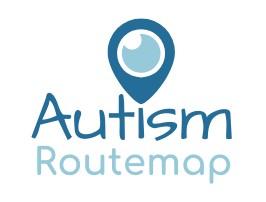5 keys to reduce confusion between autistic & neurotypical people

Autism and Asperger’s were first described in the 1940s and early portrayals were of people with very pronounced social communication difficulties and repetitive behaviours. Over time, the concept of a spectrum emerged as we learned that autism also presents in far less obvious ways. The current statistics indicate that 1 in 100 people in the UK are autistic. It is highly likely therefore, that our social circles include a mix of neurotypical and autistic people.
I love the work of developmental psychologist, Dr Robert Kegan, who authored the book, “An Everyone Culture”. Dr Kegan describes the possible transitions in our mindsets as we mature throughout life. From our impulsive minds at birth where we act on impulse and instinct to the pinnacle of the self-transforming mind, where we can appreciate that everyone has a unique life story. Rather than a black and white mindset, the self-transforming mind embraces change and growth as it collaborates with others. What is interesting, is that only a tiny percentage of people (1%) are estimated to reach this stage of thinking.
It is in the willingness to set aside judgement, listen and embrace difference that we can build something that is far greater than the sum of parts. Together, as collaborators, we open the door to new possibilities and creations.
In my work with autistic people, I often see how subtle communication differences can have a large impact. Many are dealing with the consequences of fractured relationships and the associated stress this brings. Understanding these differences from the perspective of the self-transforming mind is key to dealing with the challenges and unlocking the potential of a diverse humanity.
Imagine a world where we don’t react negatively to people who are different or hold different views.
In the last two posts, I outlined how the different thinking styles of neurotypical and autistic people can easily lead to misunderstandings and relational fall-out. Autistic people often show strengths in tasks that require structured, sequential thinking and strong visual processing skills.
Conversation, on the other hand, relies on global thinking and auditory processing. So, the autistic person has to cope with these processing challenges in addition to difficulties reading social cues. This means that they are working very hard in everyday conversation. When you consider that conversation underpins much of what we do on a daily basis, it's no wonder misunderstandings happen and autistic people often report high levels of exhaustion.
So, what can we do to decrease the likelihood of “crossed-wires” between autistic and neurotypical people? Here are a few ideas …
#1 Interruptions
Don’t assume that an autistic person hears all of what you say if you interrupt them. They may need some time to “tune in”. It’s helpful, to say their name first, pause and then speak.
#2 Be specific
Do not expect an autistic person to infer information. Be clear about your needs and expectations. Don't say you’re “fine” if you aren’t. It’s unhelpful to interpret an autistic person’s response as a “lack of care or concern” if you didn’t give the necessary details.
Avoid general language like needing more “help” or “support”. Say how you would like an autistic person to help or support you.
Don’t interpret their requests for details negatively. They are genuinely seeking clarity because they are confused.
#3 Allow extra processing time
We are accustomed to pauses of a certain length and naturally assume that something is wrong if the silence is longer than normal. But don’t interpret an autistic person’s slower response negatively. They may simply be processing what you have just said. Accept that the pauses may be longer.
It can often be helpful to ask the autistic person for feedback as this allows the neurotypical person to respond appropriately. Phrases such as, “I’m thinking about that”, “I didn’t hear you” or “I’m not sure that I understand” help to avoid misunderstandings.
An autistic person may not feel able to engage in discussion in the moment. Sometimes, it’s helpful to postpone discussions that are important to a time that suits you both.
#4 Get rid of background noise
Competing noise increases the processing demands so if you’re trying to have a conversation, switch off the TV, turn off the music, shut the window or move to a quieter space. Busy restaurants are not the best place for deep discussions. It may be far more productive to go for a walk or to a quiet room - away from the hustle and bustle of life.
#5 Reading social cues
When it comes to social cues, the key factor is interpretation of the autistic person's behaviours. Lack of eye contact, for example, is not synonymous with feeling angry, detached or trying to hide something. Avoiding touch, similarly is not an indication of dislike. Serious facial expression may not denote anger. And a flat tone of voice does not necessarily signal disapproval.
In all of these areas, it is necessary for us to embrace the self-transforming mind and get curious. Don’t make assumptions – they are usually negative especially when we are operating from the lower level of an individualistic and competitive mindset. Ask for feedback and be open to hearing something that doesn’t make sense to you. Yes, it's messy and uncomfortable at times but it is also the pathway to greater discovery and growth.
To an everyone culture!
Linda Philips
MSc. Human Communication
Autism Routemap supports autistic and neurodiverse people with coaching and training to improve communication, people skills and emotional well-being. Interested in knowing how we can help?
Contact [email protected] or book a free Turning Point call here.

